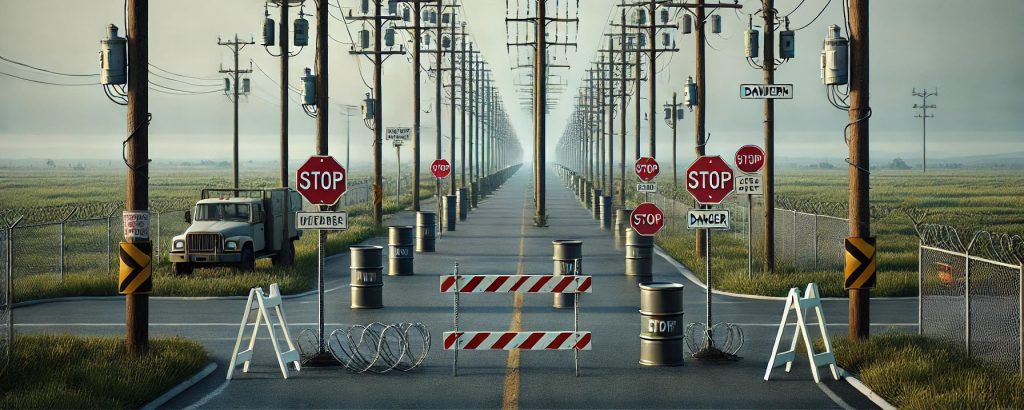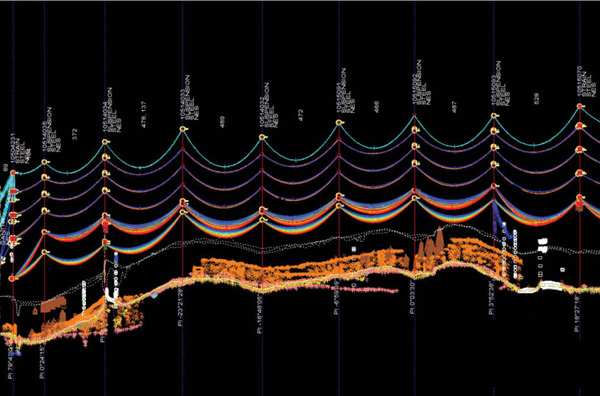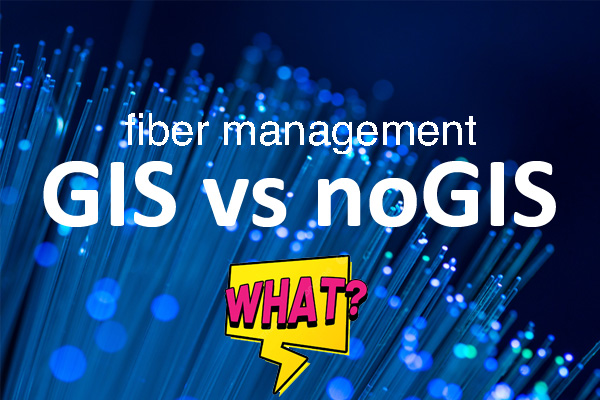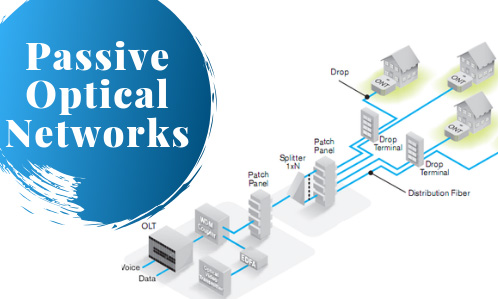
Internet Service Providers (ISPs) often face significant challenges related to Right of Way (ROW) when deploying fiber optic infrastructure or expanding their fiber networks. ROW refers to the legal right to install infrastructure (like fiber optic cables, utility poles, towers, and equipment) on public or private property. What you should know:
Table of contents
General considerations of fiber networks vs ROW
Common problems of ROW when building fiber optic network in rural areas
ROW laws and regulations
Conclusion
Sources
1. High costs
- Permitting fees: Local governments, municipalities, or private landowners may charge high fees for access to ROW. These fees can vary widely depending on the location, making it expensive to install fiber optics in urban or rural areas.
- Costly rent for space: In cases where ROW includes the use of utility poles or underground ducts, ISPs often need to pay utility companies or governments for renting this space. The rates can be prohibitive, especially for small ISPs.
2. Delays due to bureaucratic processes
- Permitting delays: Securing the necessary permits for ROW can be a time-consuming process, as ISPs often need to navigate multiple layers of government regulations at the local, state, and federal levels. This can slow down the rollout of new infrastructure.
- Lengthy approval times: Different municipalities may have different approval times, and sometimes conflicting regulations, which further slows down network expansion efforts.
3. Inconsistent regulations
- Varying local ordinances: Each city, county, or state may have different ROW regulations. ISPs must adapt to diverse rules, creating logistical and legal challenges. For instance, some areas might have strict environmental regulations or aesthetic considerations that make installation more complex.
- No uniform ROW policy: The lack of standardized regulations across jurisdictions leads to inefficiencies and makes large-scale network deployment projects harder to manage. Some municipalities might not have clear ROW policies at all, adding to the uncertainty.
4. Competition for access
- Limited space on poles or in conduits: Multiple ISPs or utility companies may compete for access to the same ROW space, particularly on utility poles or underground conduits. When the space is limited, ISPs can experience delays while waiting for their turn to access these resources.
- Incumbent monopoly: In some cases, incumbent service providers may already have ROW agreements in place, making it difficult for new ISPs to gain access. These incumbents may try to block competitors by using legal or contractual barriers.
5. Legal disputes and challenges
- Eminent domain issues: In certain areas, ISPs might face legal challenges regarding eminent domain, where landowners oppose the use of their property for infrastructure deployment. ISPs can get entangled in costly legal disputes to secure ROW.
- Disputes over maintenance and responsibility: After installation, disputes may arise regarding maintenance responsibilities for poles or conduits. ISPs and utility companies may disagree over who should cover repair costs or handle liability for damages, leading to operational delays.
6. Environmental and community opposition
- Public resistance: Community opposition to infrastructure deployment can arise due to environmental concerns or aesthetic reasons. ISPs may need to reroute or redesign their network plans, adding to costs and delays.
- Environmental compliance: ISPs must comply with various environmental regulations, especially when crossing protected lands or wetlands. These environmental reviews can add significant delays and require costly mitigation measures.
7. Safety and technical constraints
- Safety concerns: ROW infrastructure deployment can sometimes involve safety issues, such as working in high-traffic areas, near power lines, or in sensitive environmental zones. These risks can delay projects and increase costs.
- Technical complexity: Installing fiber underground or on poles requires technical expertise to avoid damage to existing infrastructure (such as gas or electric lines), which can increase the complexity and cost of deployment.
Common problems of ROW when building fiber optic network in rural areas
Building fiber optic networks in rural areas, especially through challenging environments like farms and forests, presents several unique Right of Way (ROW) issues. These challenges can significantly delay projects, increase costs, and complicate the maintenance of the infrastructure. Here are the key problems ISPs face:
1. Landowner negotiations and access rights
- Private landowners: In rural areas, ISPs often need to negotiate with numerous private landowners to secure ROW access across their fields. Farmers may be resistant to having their land used for cable installation due to concerns over disruption of agricultural activities, potential damage to crops, or reduced land value. Negotiations can be time-consuming and costly.
- Eminent domain challenges: While governments may have the power of eminent domain to acquire ROW for infrastructure, it is rarely used for fiber optic projects, leading ISPs to rely heavily on individual landowner agreements. This can lead to legal disputes, slowing down the project.
2. Environmental and ecological concerns
- Forests and protected areas: Installing fiber optics through forests requires careful environmental assessments. Many forests are protected by conservation laws, meaning ISPs must comply with stringent environmental regulations. These regulations often demand detailed environmental impact studies, rerouting to avoid harming sensitive ecosystems, and expensive mitigation measures.
- Wildlife habitats: ROW through forests may disrupt wildlife habitats or migration paths, which can lead to further regulatory challenges or opposition from environmental groups. For example, certain forested areas may be home to endangered species, adding another layer of complexity.
3. Terrain and installation complexity
- Difficult terrain: The physical characteristics of rural areas like forests, mountains, or wetlands make it difficult to deploy fiber optic cables. Trenches might need to be dug through rocky or uneven ground, or special equipment may be required for installation in dense forest areas. This increases both the time and cost of deployment.
- Soil conditions in farmlands: Agricultural land presents its own set of challenges, such as dealing with irrigation systems, fluctuating water levels, and loose soil conditions. All of these factors complicate underground installation, especially when deep trenching is required to avoid interference with farming equipment.
4. Maintenance and accessibility issues
- Seasonal restrictions: In many rural areas, especially farms and forests, access to ROW may be limited due to seasonal weather conditions. For example, heavy rainfall, flooding, or snow can prevent the maintenance of fiber optic cables or delay installation. In agricultural fields, maintenance may have to wait until after the planting or harvesting seasons to avoid damaging crops.
- Access roads: Many rural ROWs lack existing infrastructure such as access roads, making it difficult to transport equipment or workers to the installation site. Forests may lack clear paths, and building temporary roads or clearing trees can be both environmentally damaging and costly.
5. Utility infrastructure challenges
- Lack of existing infrastructure: Unlike urban areas, rural regions often lack existing utility poles or underground conduits that ISPs can lease to install fiber optic cables. As a result, ISPs may need to build their own infrastructure from scratch, whether that means digging trenches, erecting poles, or installing underground ducts, all of which increase costs and require more ROW negotiations.
- Pole access and permitting delays: When utility poles are available, they may be controlled by local electric cooperatives or private companies, leading to lengthy negotiations for access and rent. These poles may also be less densely placed in rural areas, requiring more extensive cable runs and additional poles, complicating the process.
6. High costs and funding issues
- Expensive installation: Installing fiber optic networks through rural fields and forests often involves much higher costs compared to urban areas. Longer distances between homes or farms mean more cable is required, and the lack of existing infrastructure means ISPs have to invest more in ROW acquisition and construction.
- Funding gaps: Rural broadband projects are often less profitable because of the low population density, which translates into fewer subscribers to cover the costs. Even with government grants or subsidies aimed at improving rural broadband access, ISPs may struggle to justify the investment due to these higher upfront costs and potential ROW issues.
7. Regulatory and permitting delays
- Local and federal regulations: ROW in rural areas might cross through federally owned land, protected forests, or agricultural preservation zones, all of which could trigger a variety of additional regulatory hurdles. This includes obtaining permits from federal agencies like the Bureau of Land Management (BLM), the U.S. Forest Service, or other local regulatory bodies that govern rural development.
- Inconsistent regulations across jurisdictions: Rural areas often span multiple jurisdictions, meaning ISPs must navigate different local rules, regulations, and permitting processes for ROW, adding complexity and delays to the project timeline.
ROW laws and regulations
When building fiber optic networks in rural areas, the Right of Way (ROW) issues are subject to a number of specific laws and regulations. Here are some key laws and regulations that apply:
1. Telecommunications act of 1996 (U.S.)
- Relevant Sections: Sections 253 and 706
- Section 253: Prohibits states and local governments from enacting laws that prevent any entity from providing telecommunications services. This provision can help ISPs challenge local restrictions that prevent access to ROW.
- Section 706: Encourages the deployment of broadband infrastructure by removing barriers to investment. It mandates that both federal and state regulators take proactive measures to promote broadband development, including in rural areas.
2. National Environmental Policy Act (NEPA)
- When fiber networks cross federal lands or areas subject to federal regulation, NEPA comes into play. It requires federal agencies to assess the environmental impact of proposed infrastructure projects. If fiber cables are laid through sensitive environmental areas (e.g., forests, wetlands), a NEPA environmental review is required, adding time and cost to ROW access.
- NEPA can trigger the need for Environmental Impact Statements (EIS) or Environmental Assessments (EA), particularly when the installation affects protected lands or habitats.
3. National Historic Preservation Act (NHPA)
- Section 106 of NHPA: Requires federal agencies to consider the impact of their projects on historic properties. If the ROW project crosses areas with historical significance (even in rural areas), ISPs must ensure compliance with this act. This can include coordination with the State Historic Preservation Office (SHPO).
4. Rural Electrification Act (REA) of 1936
- The Rural Electrification Act is a foundational piece of legislation that has been updated over time to support rural broadband initiatives. The Telecommunications Infrastructure Loan Program (administered by the USDA) offers low-interest loans for broadband expansion, but ISPs receiving these funds must comply with specific ROW regulations for installing telecommunications equipment across agricultural lands.
5. Bureau of Land Management (BLM) and U.S. Forest Service (USFS) ROW regulations
- When fiber optic networks cross federal lands managed by the BLM or USFS, ISPs must comply with the Federal Land Policy and Management Act (FLPMA). This act governs ROW grants for projects on federal land. ISPs need to secure ROW leases and comply with BLM’s ROW regulations under 43 CFR Part 2800, which involve environmental reviews and public interest considerations.
- The U.S. Forest Service has its own ROW rules under 36 CFR Part 251, governing special use permits for fiber optic installations crossing national forests.
6. Farm bill and rural broadband
- The Agriculture Improvement Act of 2018 (Farm Bill) contains provisions that encourage rural broadband expansion, including ROW access through private agricultural lands. The ReConnect Program offers grants and loans for broadband projects in rural areas, and recipients must comply with both state and federal ROW regulations.
- The Farm Bill also addresses concerns over access to existing utility poles or the installation of underground fiber through farmland, often requiring collaboration with the USDA’s Natural Resources Conservation Service (NRCS) to ensure that projects do not interfere with farmland conservation efforts.
7. Sate-specific ROW laws
- State Departments of Transportation (DOTs) often regulate ROW for fiber installation along highways and roads. For example, Caltrans in California requires ISPs to comply with California Public Utilities Code Section 7901, which allows telecom companies to use public ROW but requires them to adhere to local permitting rules.
- Illinois has specific ROW rules under its Highway Code (605 ILCS 5), governing fiber installation along state roads and highways. Each state can have different ROW provisions that affect the cost and process for rural network expansion.
8. Clean Water Act (CWA)
- If fiber optic cables are installed across wetlands, lakes, or rivers in rural areas, ISPs must comply with the Clean Water Act (CWA). Permits are often required under Section 404 of the CWA, issued by the U.S. Army Corps of Engineers, for discharges of dredged or fill material into waters, which impacts trenching for fiber deployment.
9. Occupational Safety and Health Administration (OSHA) regulations
- OSHA’s regulations affect ROW installations by mandating safety practices for trenching, working in confined spaces, or handling potentially hazardous materials (like resins used in splicing). Compliance with OSHA standards under 29 CFR 1926 is critical, especially in areas like farms or forests where safety risks can be higher.
10. State Environmental Policy Acts (SEPAs)
- Some states, like California, have their own environmental regulations (such as CEQA, the California Environmental Quality Act) that impose additional environmental review processes for ROW in rural areas, particularly in ecologically sensitive zones like forests.
Conclusion
Building fiber optic networks in rural areas, like farms and forests in particular, poses ROW issues and a significant challenge for ISPs, affecting both costs and timelines for network deployment. The lack of standardized processes, high fees, legal disputes, competition for space, difficulties with landowner negotiations, environmental restrictions, technical complexities, accessibility and bureaucratic delays all contribute to the difficulties ISPs face in securing and utilizing ROW for fiber optic rollouts. Solutions like better regulatory frameworks, public-private partnerships, financial support from government programs aimed at rural broadband expansion, and streamlined permitting processes are often suggested to address these challenges.
The construction of fiber optic networks in rural areas is governed by a complex web of federal, state, and local regulations. These laws focus on environmental protection, historic preservation, public safety, and land management, making ROW acquisition one of the most challenging aspects of rural broadband deployment. Key regulations such as the Telecommunications Act of 1996, NEPA, BLM’s FLPMA, and the Farm Bill play critical roles in shaping the ROW landscape for ISPs.
Sources
Telecommunications Act of 1996
Rights of way @ Bureau of land management
Right of way @ Legal information institute
Understanding property rights chart PDF
Don't hesitate! Start using splice.me
Create, manage, control all your fiber splicing in one place, fast and easy




